For many people, experiencing an authentic tea ceremony in Kyoto is high on their wishlist.
Alongside staying in a ryokan and soaking in an onsen, or attending a sumo tournament, observing the Japanese tea ceremony is a cultural delight that feels as much an honour to witness as it does to savour the delicate matcha tea.
My wife and I attended a Private tea ceremony at Camellia Garden tea house in Kyoto. This was our experience...
A 1,200 year history
Steeped in a history stretching back as far as the 9th century, few experiences in Japan come with as much cultural resonance as the Japanese tea ceremony.
What is, in essence, a simple preparation of a drink that millions of people around the world drink every day, has been transformed by Japanese culture into a ceremonial performance almost worthy of the fine arts.
Camellia Tea Ceremony, Kyoto
by Rob Dyer
The historical figure of Sen no Rikyū is considered to be the individual most responsible for the tea ceremony as we know it. Rikyū used tea rooms to put into practice his ideas about the rustic simplicity of the ceremony.
A tiny tea room named Tai-an remains to this day and can be seen at Myōki-an temple in the Kyotosuburb of Yamazaki.
Elements of the tea ceremony
A prolific woodblock artist of Japan's Meiji period was Toyohara Chikanobu (he lived from 1838–1912), better known to his contemporaries as Yōshū Chikanobu. One of his prints, dating from 1895, depicts the Japanese tea ceremony.
It's only when looking at such an historical image that you realise just how little has changed since it was painted, more than one and a quarter centuries ago.
In Chikanobu's woodcut it's remarkable how all the essential elements are still clearly identifiable today, and just how little has changed.
The key components of the tea ceremony, the sunken hearth, the iron pot, the tea caddy, tea bowl, tea scoop, the whisk, the small wooden table for storing the equipment, even the screen around the table featuring a decorative panel.
Guests sit to one side in order to observe the ceremony, while the traditional Japanese garden is visible in the background.
Camellia - Kyoto's premier tea ceremony experience
Few locations in Japan are as perfect, or appropriate, a setting for the tea ceremony as Kyoto is. The best quality tea has been grown in Kyoto since the 13th century.
It was during this period that the luxuries associated with tea making became something of a status symbol, and tea-tasting parties, named tōcha, arose in which contestants competed for extravagant prizes, had to identify the best quality tea - that was grown in Kyoto.
Camellia prides itself on being Kyoto's premier tea ceremony experience. It caters for guests in two, quite distinct premises, located on opposite sides of the city.
Camellia Flower (central Kyoto)
The first, Camellia Flower is located in the Higashiyama district, near the heart of Kyoto, and isn't far from some of Kyoto's most famous landmarks.
Kyoto's Gion neighbourhood, perhaps Japan's most well-known and exclusive geisha districts, is a leisurely 15 minute stroll away.
Read More: Camellia Flower Teahouse: Authentic Kyoto Tea Ceremony
Camellia Garden (north Kyoto)
The second teahouse, Camellia Garden, can be found in Kyoto's northern Ukyo area, close to the mountains that run along Kyoto's northern border. Of the two, this is the larger, more serene one, located in a quiet residential neighbourhood.
Hidden behind an imposing wall and gateway lies a charming machiya - a traditional wooden townhouse. There are far fewer machiya today than in the past and their destruction is a huge cultural loss to Japan. So to be able to participate in a tea ceremony in a machiya is something special.
Several of Kyoto's top attractions including the Ryoan-ji Zen temple, containing Japan's best-known rock garden, and Ninna-ji temple, are in the district. The Tenryu-ji Zen Buddhism temple complex including the stunningly beautiful Sogenchi Garden can be found 6km west of the teahouse.
If you're looking to explore Kyoto off the beaten path while here then I recommend also reading this post on 3 Hidden Kyoto Walks To Get You Off The Beaten Path. If you need a detailed introduction check out my Kyoto City Guide.
The world-famous, and iconic, Kinkaku-ji temple, better-known as 'The Golden Pavilion,' is 1.5km northeast, a 7 minute car ride away. A must-see when visiting Camellia Garden.
(Camellia Garden is shown in the photographs in this article.)
Read More: Stunning Private Tea Ceremony: Camellia Garden Kyoto teahouse
Peace, respect, purity and tranquility
These are the words that greet you at Camellia. They reflect the essence and aims of this refined ceremony.
There's more to the experience than simply drinking tea. The goal for anyone attending should be to immerse yourself in the entire process. Ideally finding a still place inside, to ground yourself in the moment, so as to fully appreciate each aspect.
Camellia Garden's interior is the quintessential interior used for the Japanese tea ceremony. Aside from the airconditioning unit and electricity, the setting had remained essentially the same for hundreds of years.
Having taken off your shoes at the entrance to the teahouse, you'll be greeted by one of Camellia's hostesses, who'll be wearing a traditional kimono.
As guests you're welcome to wear your regular clothes for the ceremony. However, if you'd like to wear kimono also, that is an option bookable at Camellia through their website.
What's included in the experience
The price includes an explanation of the tea ceremony, a traditional Japanese sweet, a demonstration, the chance to try your hand at making matcha, and drinking a bowl of tea prepared during the ceremony.
Everything is explained in fluent English.
Guests are welcomed at the entrance, where you leave your shoes behind, and shown through to a lounge overlooking the front garden.
Traditional wagashi sweets
The experience begins with your hostess explaining the long and rich history of the tea ceremony and its significant importance in Japanese culture.
You're then served wagashi - a traditional Japanese sweet made using seasonal, local plant-based ingredients, often eaten with tea. Those served at Camellia are made by one of Kyoto's finest confectioners.
Sweets served at Camellia Garden and Camellia Flower teahouses, are gluten and nut free, and vegan friendly, meaning their tea ceremonies are as inclusive as possible.
After learning a little about matcha and the history of tea, guests are taken through to the tearoom. Typically guests sit on the floor, but they have low chairs and tables for those that would prefer it.
The tearoom overlooks a traditional Japanese back garden. Your tea instructor performs the tea ceremony and serves you bowls of matcha to enjoy.
For those that want to try their hand at making matcha, you will have an opportunity to have a short lesson before the end of the session.
RESERVE YOUR PRIVATE CEREMONY: Stunning Private Tea Ceremony: Camellia Garden Kyoto teahouse
The tea room
A tokonoma, an alcove-like recessed space, is a familiar feature in Japanese homes. It's intended as a place where artistic items can be displayed.
These items typically include a calligraphy scroll, a vase displaying ikebana (Japanese flower arrangements), an incense burner and candles.
In the tea ceremony, the hanging scroll relates to an aspect of the ceremony.
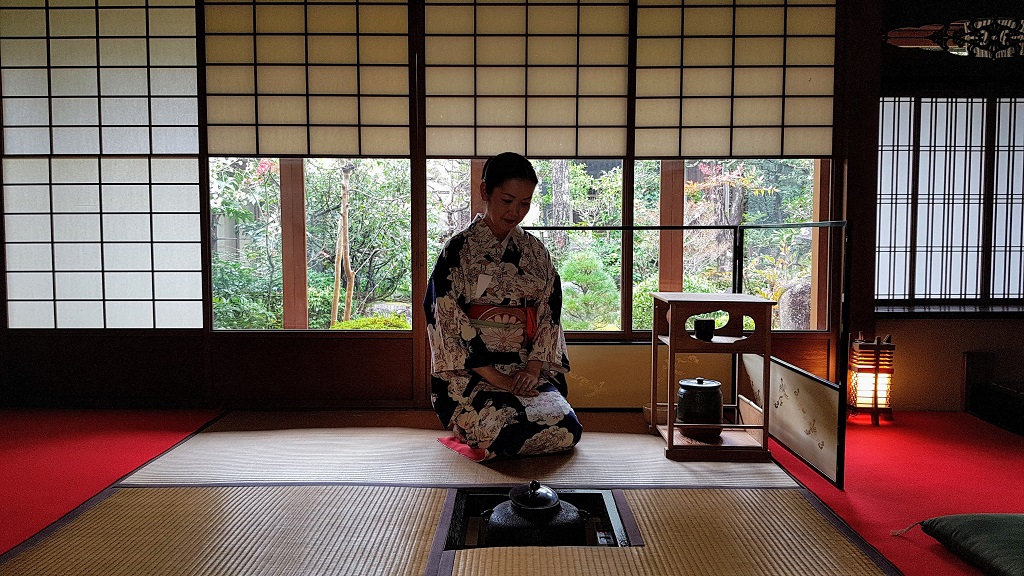
Atsuko prepares for the tea ceremony
Themes often relate to the seasons (and are changed to match the current season), poems about tea or places famous for their connections with tea.
When we visited Camellia Garden the scroll calligraphy depicted the Nichinichi kore Konichi - a Japanese Zen Buddhist proverb. It translates as "Every day is a good day".
Seasonal local flowers are displayed in the vase and, in a nice whimsical touch to the modern era, a figure of a dog wearing a red Santa hat!
Camellia Garden's tea room is a quintessential interior used for the Japanese tea ceremony. Aside from the modern conveniences of an air-conditioning unit and electricity, the setting looks essentially unchanged for hundreds of years.
BOOK THIS EXPERIENCE: Stunning Private Tea Ceremony: Camellia Garden teahouse
Creating lifelong memories
Perhaps surprisingly, given the reverential nature and attention to detail and authenticity Camellia places on its services, they are relaxed about guests taking photographs of the ceremony.
This can be an invaluable memento, especially for anyone unable to return to Japan for the foreseeable future.
Note: At Camellia Flower, where groups sharing the ceremony are hosted, only photographs without a flash are permitted, so as not to disturb the other guests.
At Camellia Garden (featured here), where private tea ceremonies are held, both photographs and video are permitted.
Awards and recommendations
It's no surprise that Camellia has been lavished with independent recognition for the quality of its experiences.
Camellia has been awarded Tripadvisor's Certificate of Excellence for five consecutive years. Tripadvisor gives the certification to accommodation, attractions and restaurants that consistently earn great reviews from travellers.
They're also recommended by Rough Guides and are one of Lonely Planet's Top Choice experiences.
Rather than preserving the tea ceremony 'in aspic', the service provided by Camellia actually keeps it very much alive by retaining authenticity.
It manages to do so by paying attention to the historical tradition and important details (something many other tea ceremony experiences fail to do) but at the same time strives to make it accessible to anyone with even just a passing interest.
Allowing the ceremony to be photographed (so guests can have precious mementos of what for some is a once-in-a-lifetime experience), serving vegan-friendly sweets, and having truly fluent English-speaking instructors are all examples of how Camellia makes this much-revered past-time genuinely accessible.
Being able to experience an authentic tea ceremony at Camellia is to get a richer insight into Japanese culture and hospitality.
Camellia's four words: harmony, respect, purity, tranquility perfectly sum up the tea ceremony - and everything that is admirable about Japanese society.
Long may this ancient tradition continue.

About the Author
A writer and publisher from England, Rob has been exploring Japan’s islands since 2000. He specialises in travelling off the beaten track, whether on remote atolls or in the hidden streets of major cities. He’s the founder of TheRealJapan.com.
Booking A Kyoto Tea Ceremony Experience At Camellia
The Real Japan has partnered with Viator (a Tripadvisor company) to make it simple for you to book this experience. Includes Viator's lowest price guarantee.
Camellia Garden, North Kyoto (Private - featured in this article)
Read More: Stunning Private Tea Ceremony: Camellia Garden teahouse
Camellia Flower, Kyoto City (Groups)
Read More: Camellia Flower Teahouse: Authentic Kyoto Tea Ceremony
Book Food Experiences
Join unforgettable food tours, cooking classes and dining experiences
Location Map: Camellia Garden
Camellia Garden Address & Access
349-12 Masuya-cho, Higashiyama-ku, Kyoto, 605-0826.
by bus
- Higashiyama Yasui Bus Stop (Bus #86 / #206) - 10 mins
- Kiyomizu-michi Bus Stop (Bus #206 / #100) - 10 mins
by train
- Gion-Shijo Station: Keihan Line - 15 mins
Nearby Attractions
Location Map: Camellia Flower
Camellia Flower Address & Access
18 Ryoanji Ikenoshita-cho, Ukyo-ku, Kyoto, 616-8003.
by bus
Ryoanji-mae Bus Stop (Bus #59 / JR Bus) - 1 min
JR Bus (Kyoto Station to Shuzan line) - 1 min
by train
Ryoanji Station: Keifuku Randen Tram Line - 5 mins
Nearby Attractions
Resources
Book This Experience
Camellia Garden, North Kyoto (Private - featured in this article)
Read More: Stunning Private Tea Ceremony: Camellia Garden teahouse
Camellia Flower, Kyoto City (Groups)
Read More: Camellia Flower Teahouse: Authentic Kyoto Tea Ceremony
3 Magical Day Trips From Kyoto To Escape The Crowds
3 Hidden Kyoto Walks To Get You Off The Beaten Path
Feel the Spirit of the Samurai Sword in Kyoto
Finding Peace – 5 Extraordinary Zen Meditation Experiences
Seike Yuba (Tofu Skin) Restaurant, Kyoto
Stardust Vegan Cafe & Boutique, A Kyoto Oasis
Top 6 Best Rated Kyoto Cycling Tours
Why You Should Explore Kamigamo Shrine In Kyoto
Read More: Sen no Riku on Wikipedia
Enjoyed this article? Feel free to share this image...
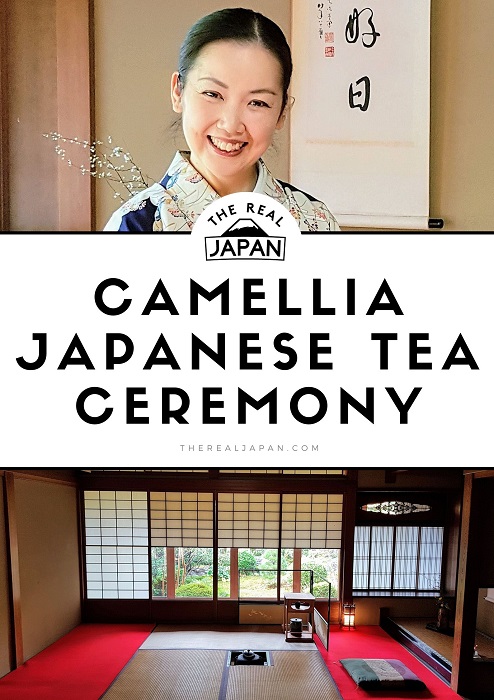


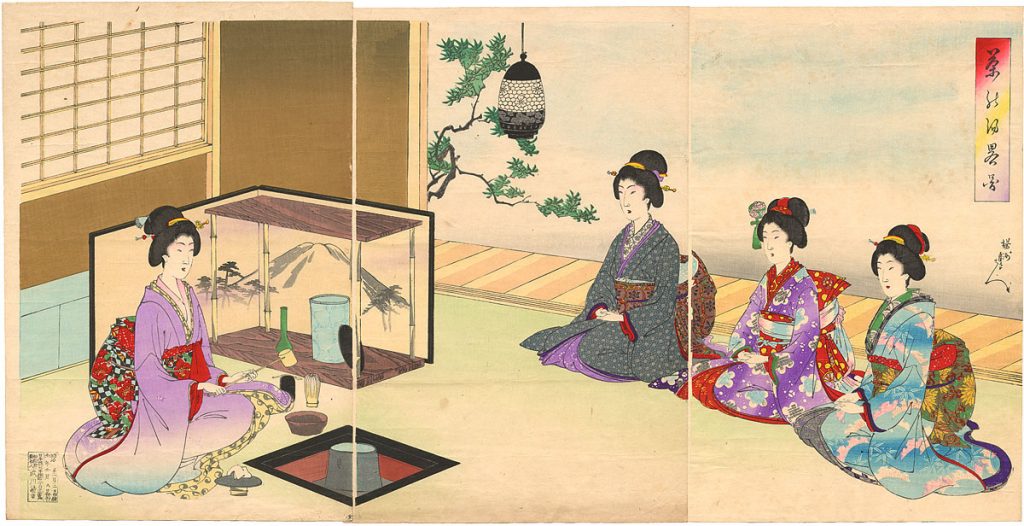
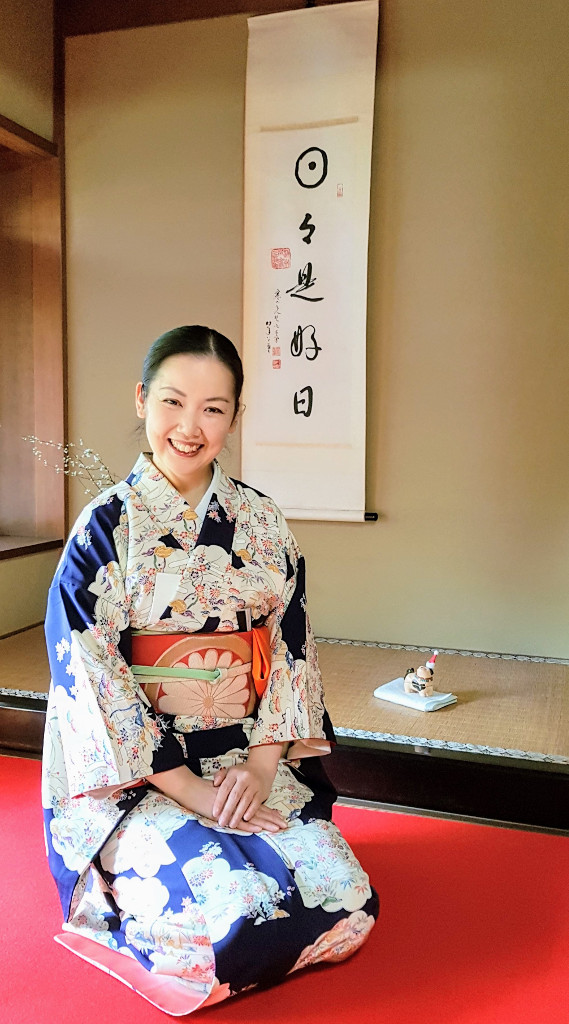
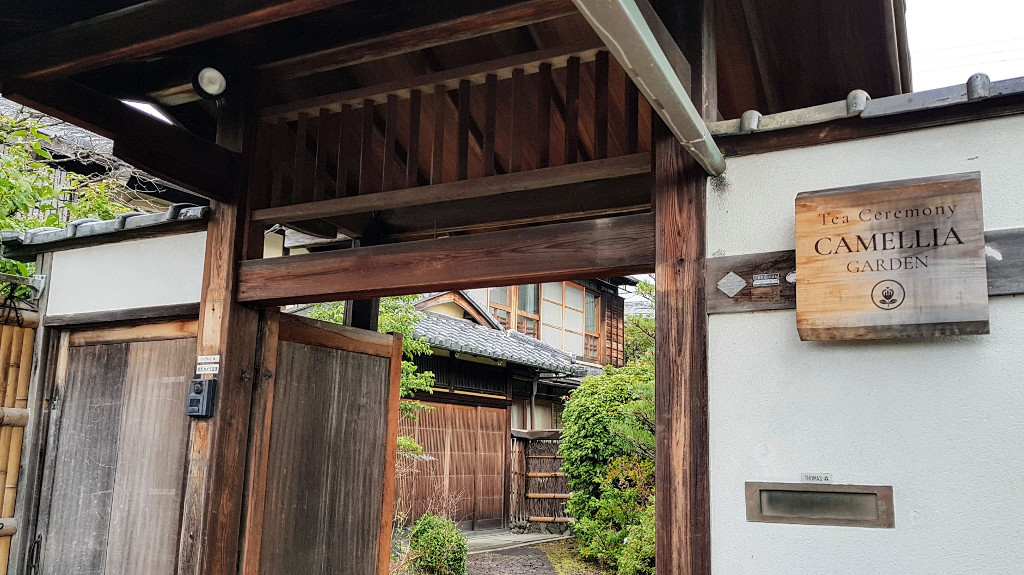
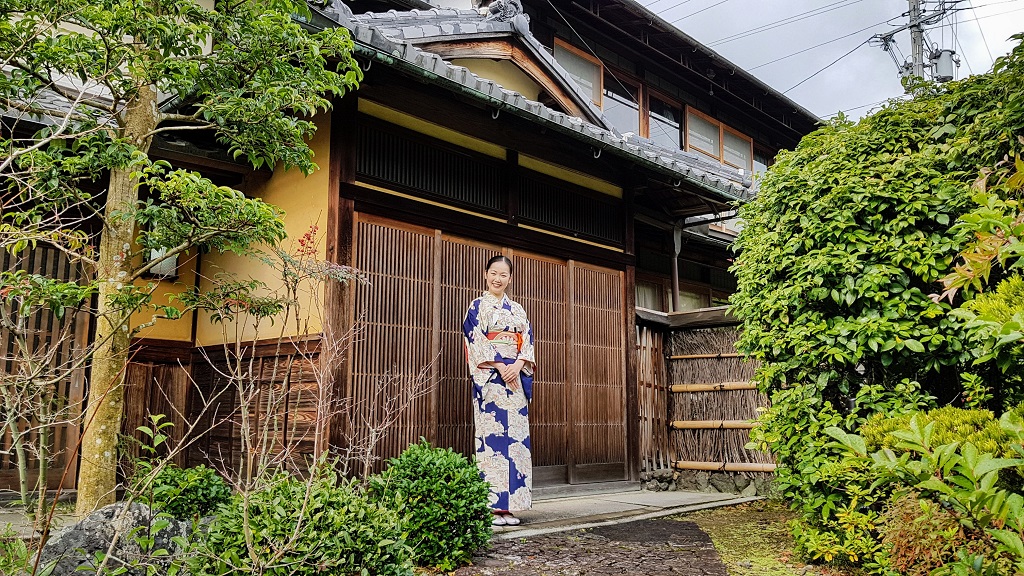
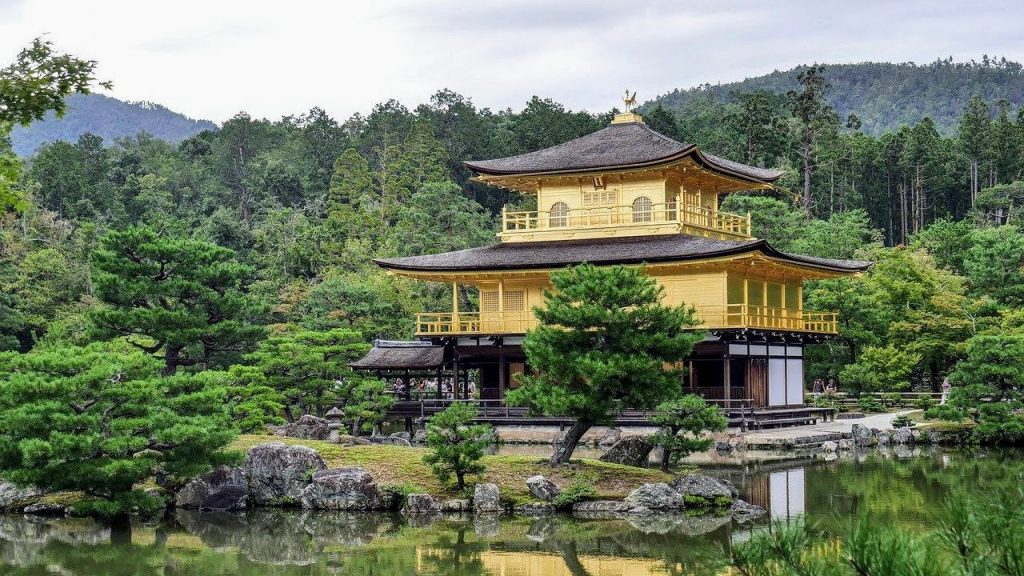
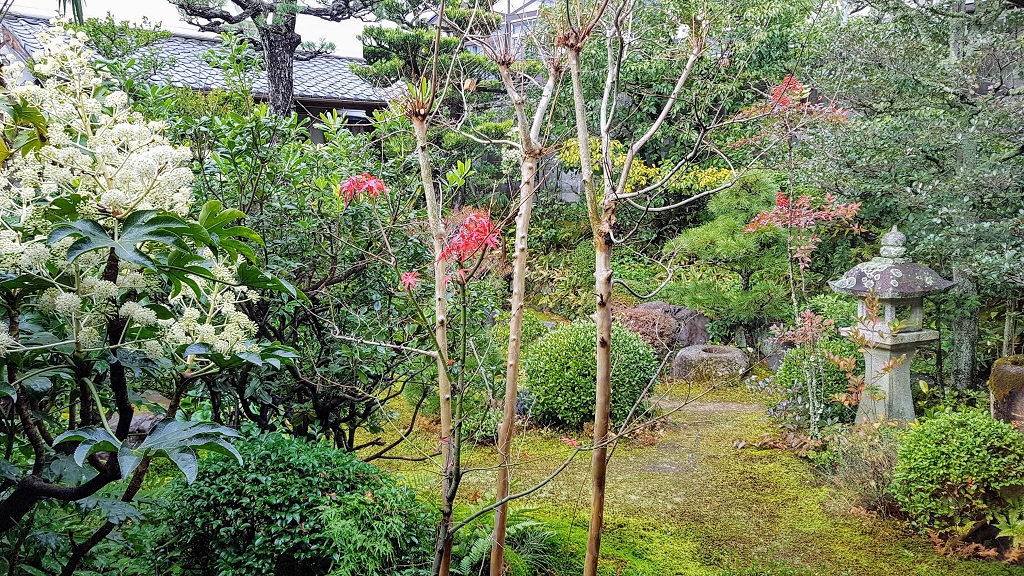
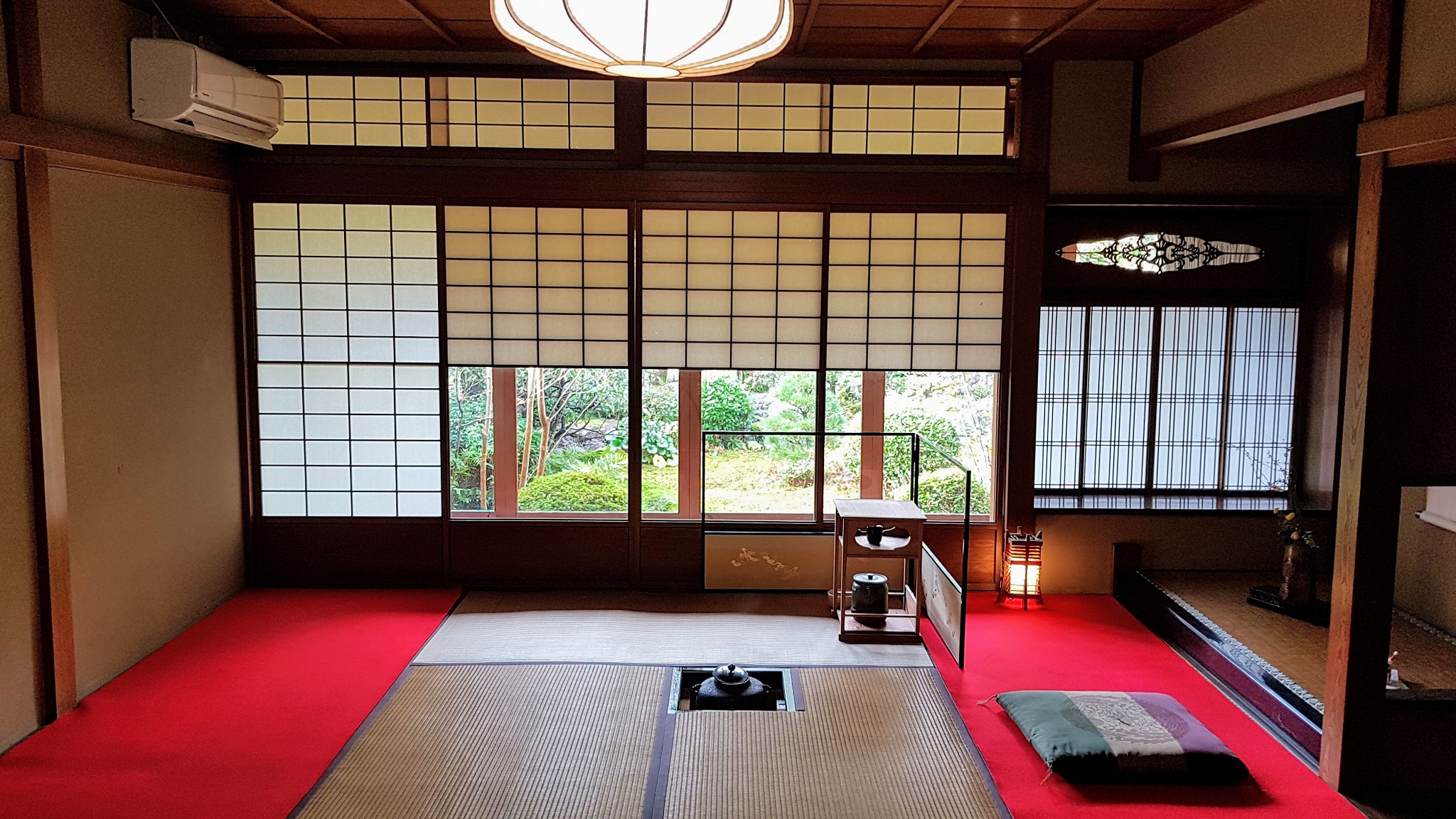
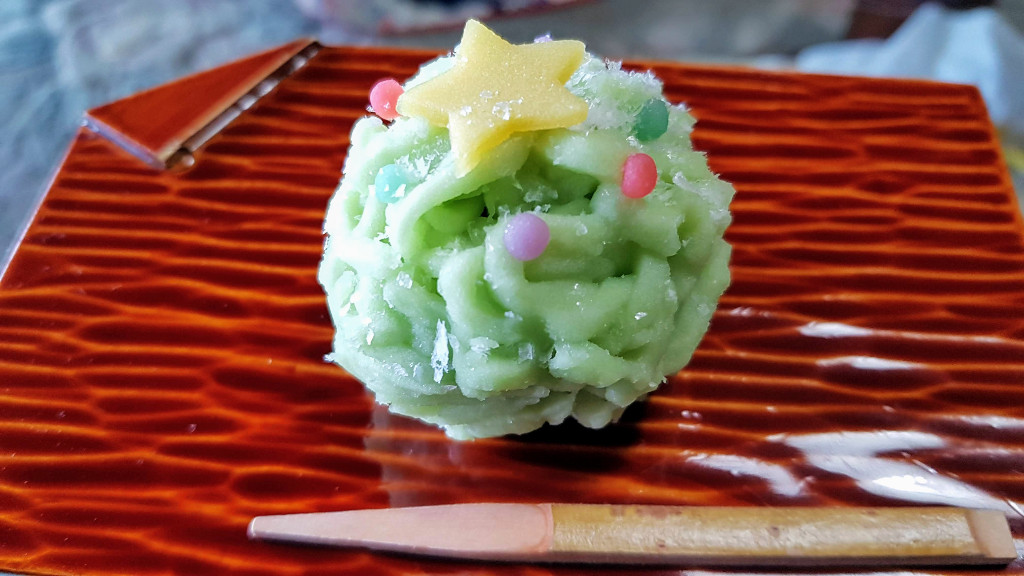
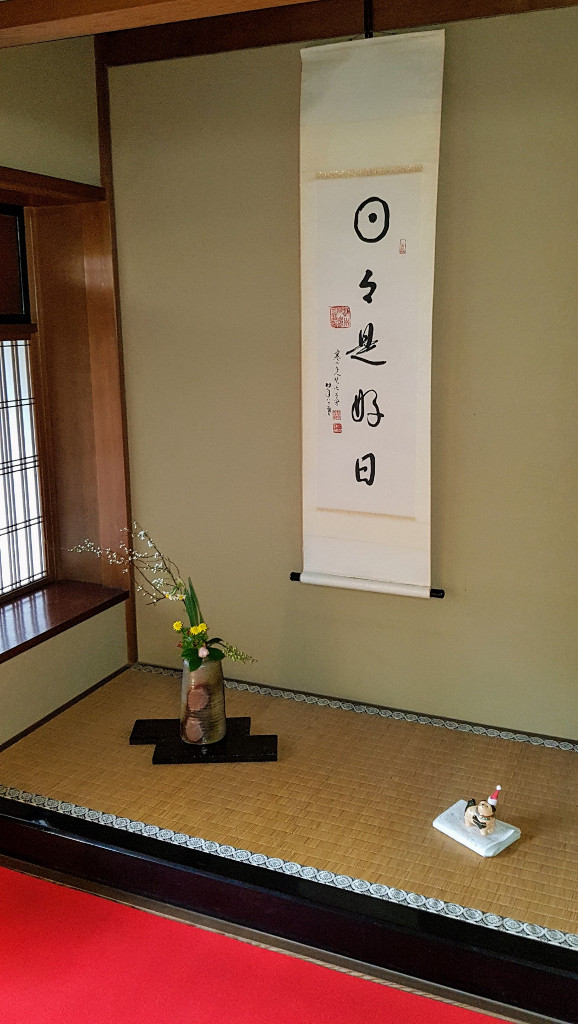
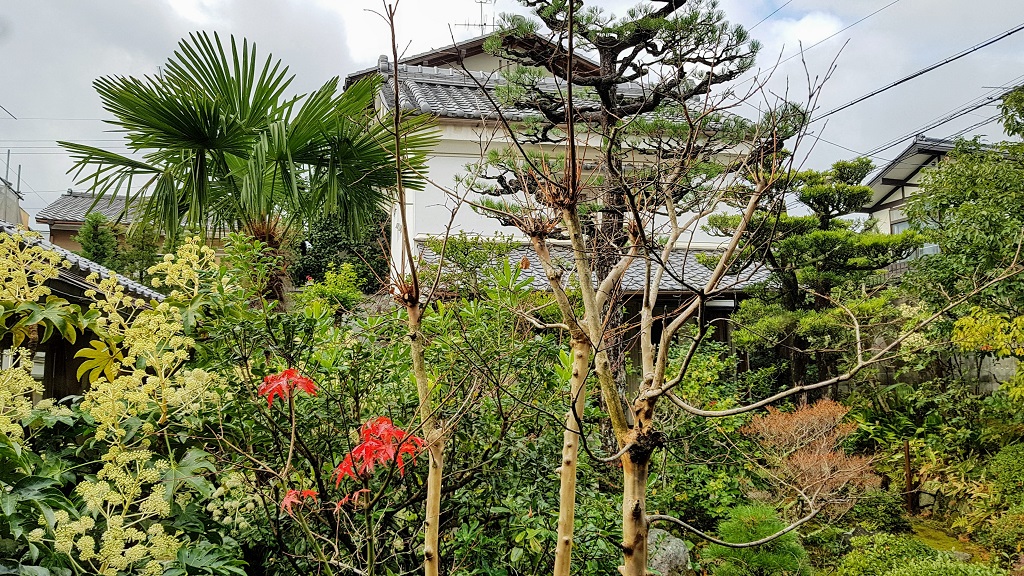
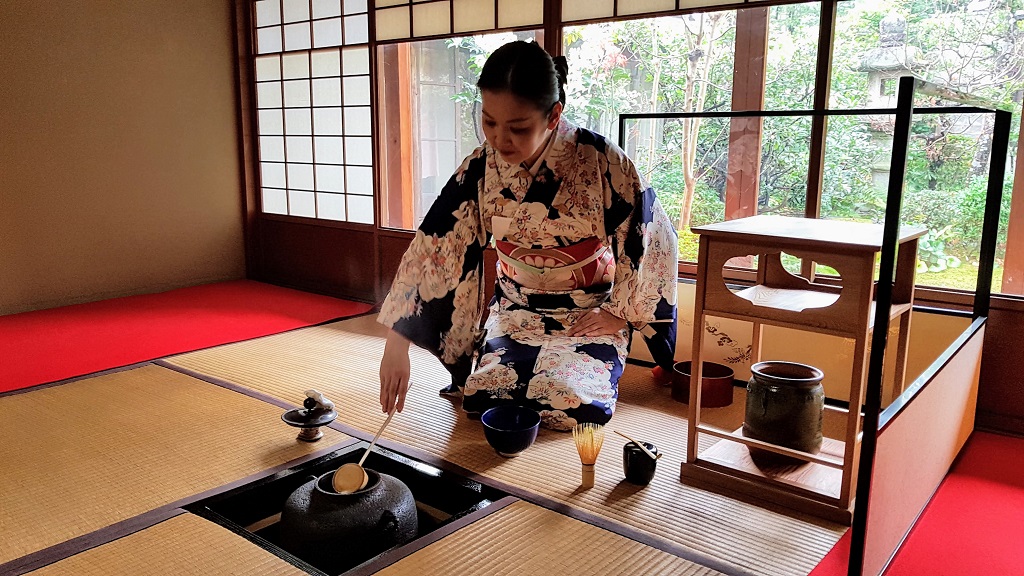
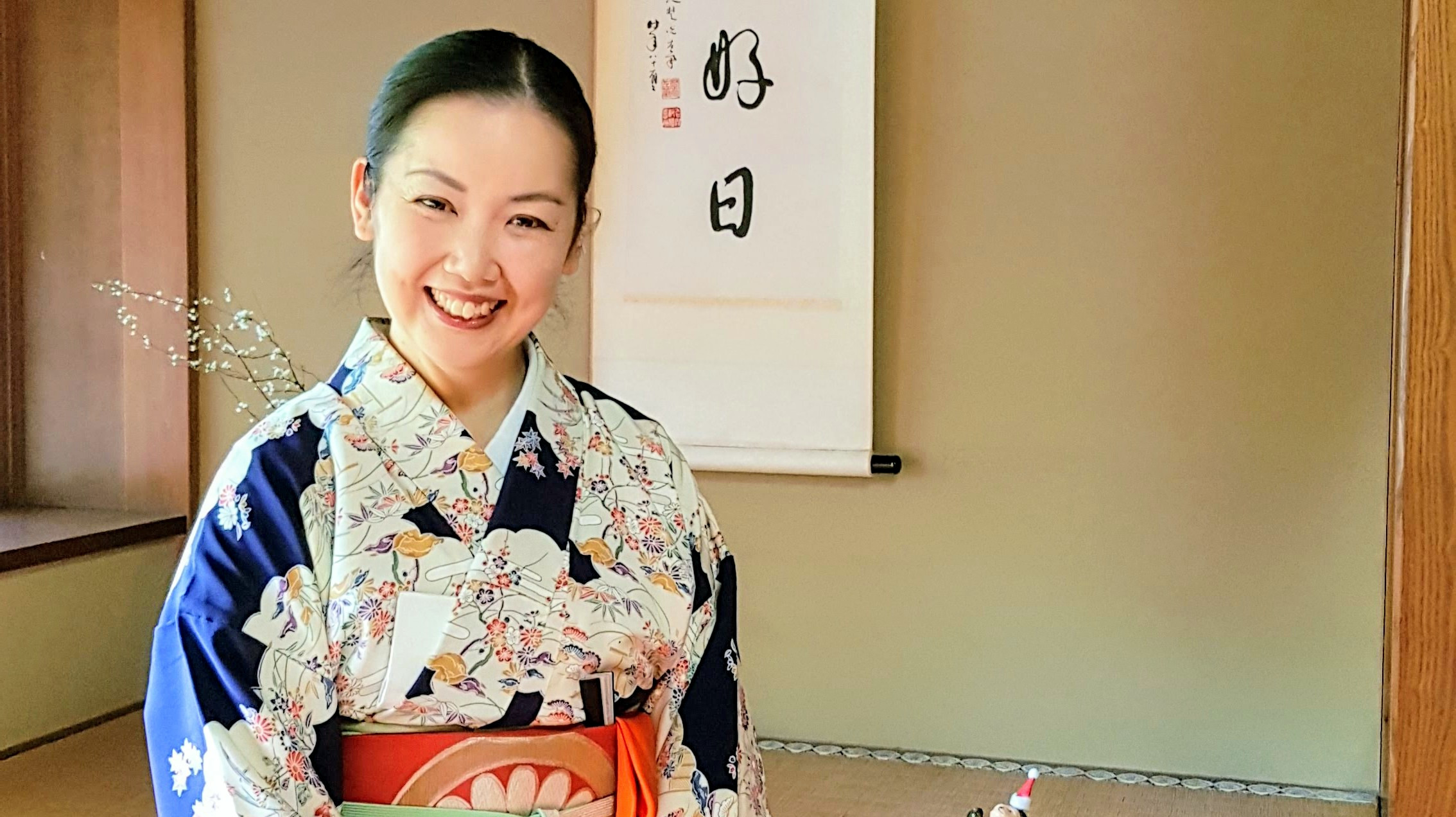
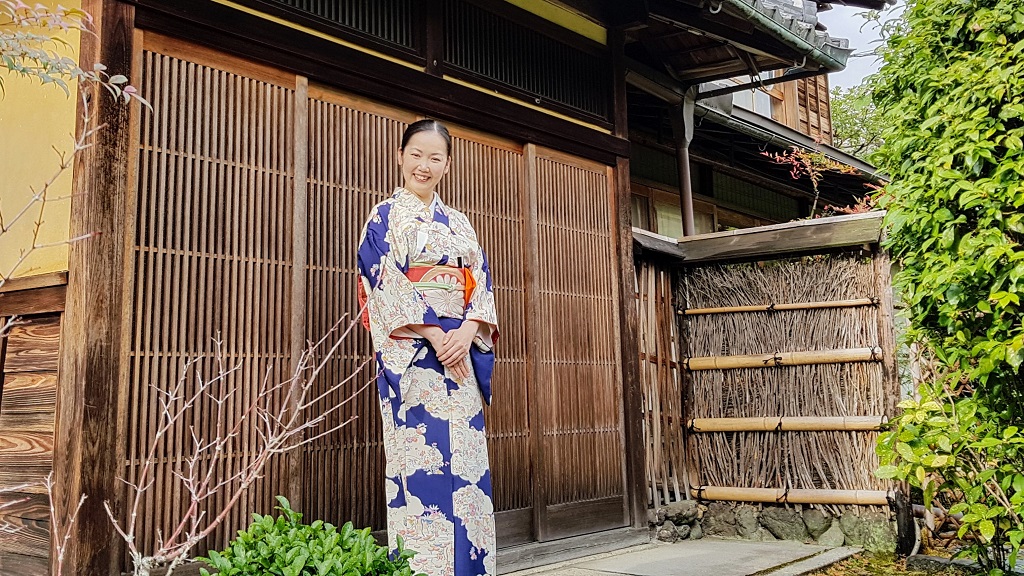
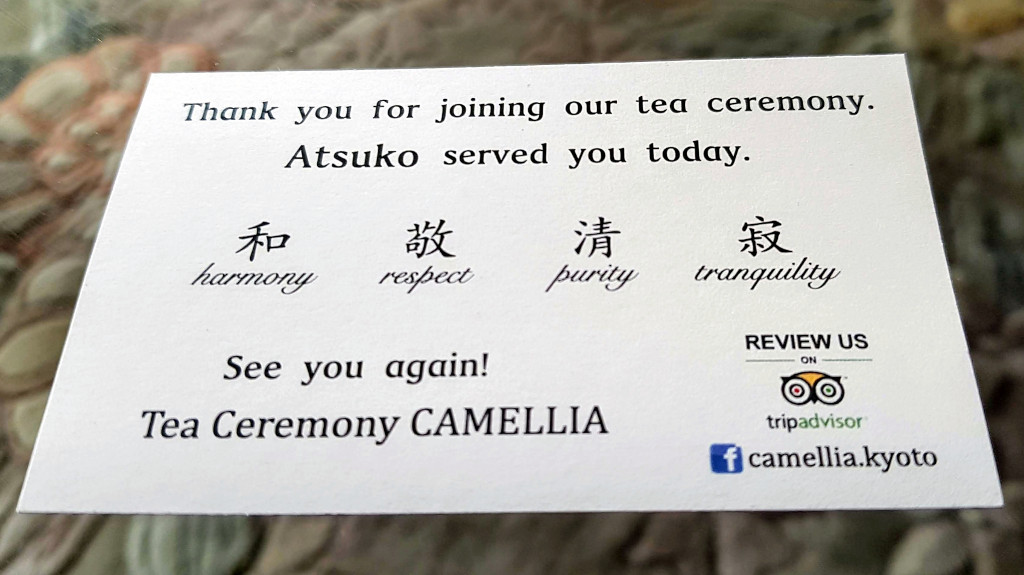
To truly arrive in Kyoto, I suggest you book with Camellia and ask specifically for Atsuko, who is a master (sensei). They do a private tea ceremony (sa-do).
I have twice experienced the tea ceremony. Once in Shizuoka Prefecture (a prefecture that is famous as tea growing area) and once in Kyoto. Also know a couple of ladies who have trained to do the tea ceremony. Although tea is an important part of it, the actual preparation and formality of the ceremony is more important, as is the bowl (cup) it is served in and the ambience of the tea ceremony room – which is often in a specially built building. That being said, although I drink a lot of green tea, I am not a fan of the thick tea that is made and served at the tea ceremony, which more like a thick soup. I would however recommend people to experience the ceremony, it is both artistic and contemplative.
Thanks for sharing your experiences Stephen. You’re completely right in that the ‘ceremony’ of *making* the tea is really what it is all about as much as the actual tasting. Unlike you I actually prefer tea ceremony tea to regular matcha. But then I’m more of a hojicha man than regular ocha.
Fancy
It’s a terrific experience Daryl-Rhys. Definitely recommended.